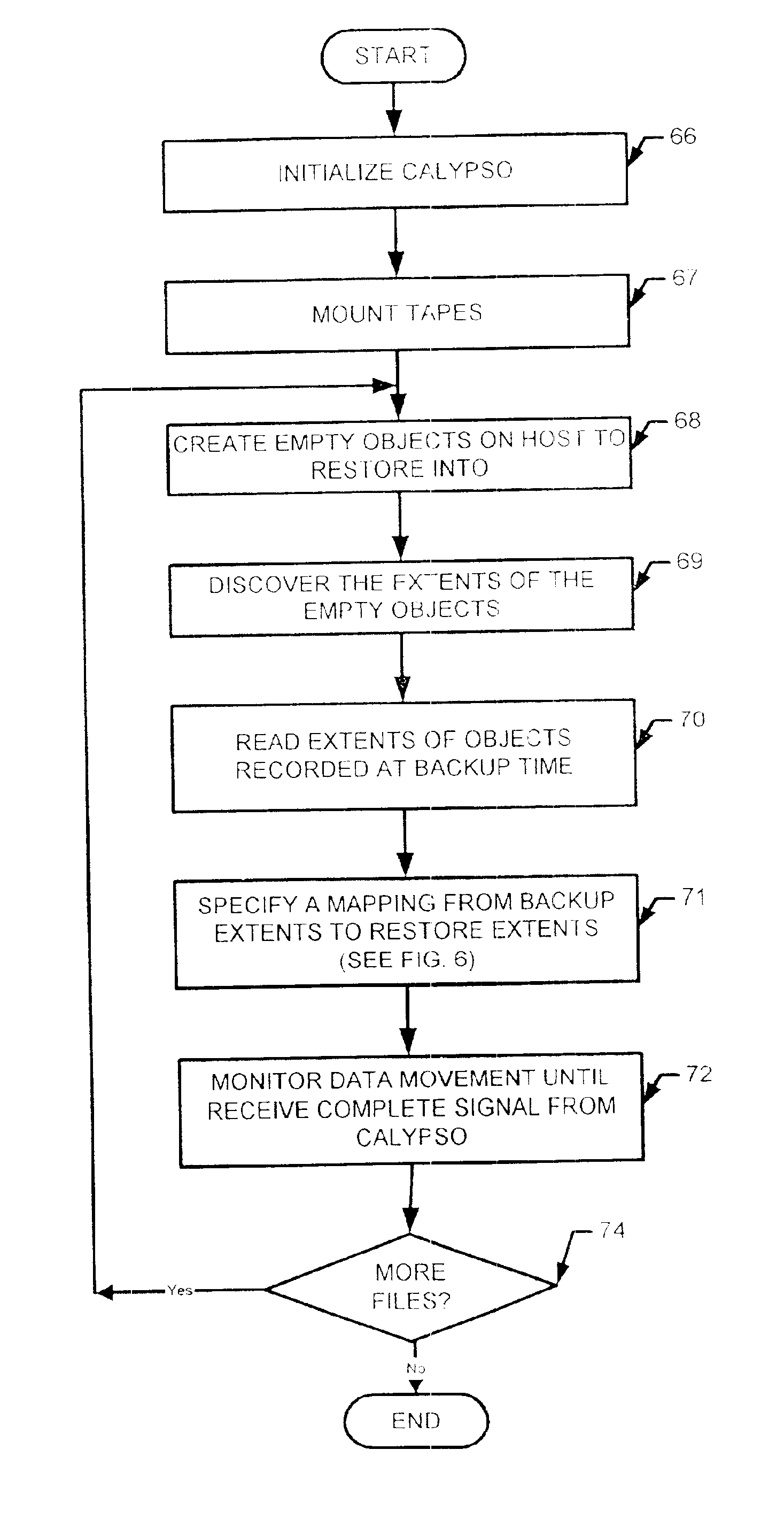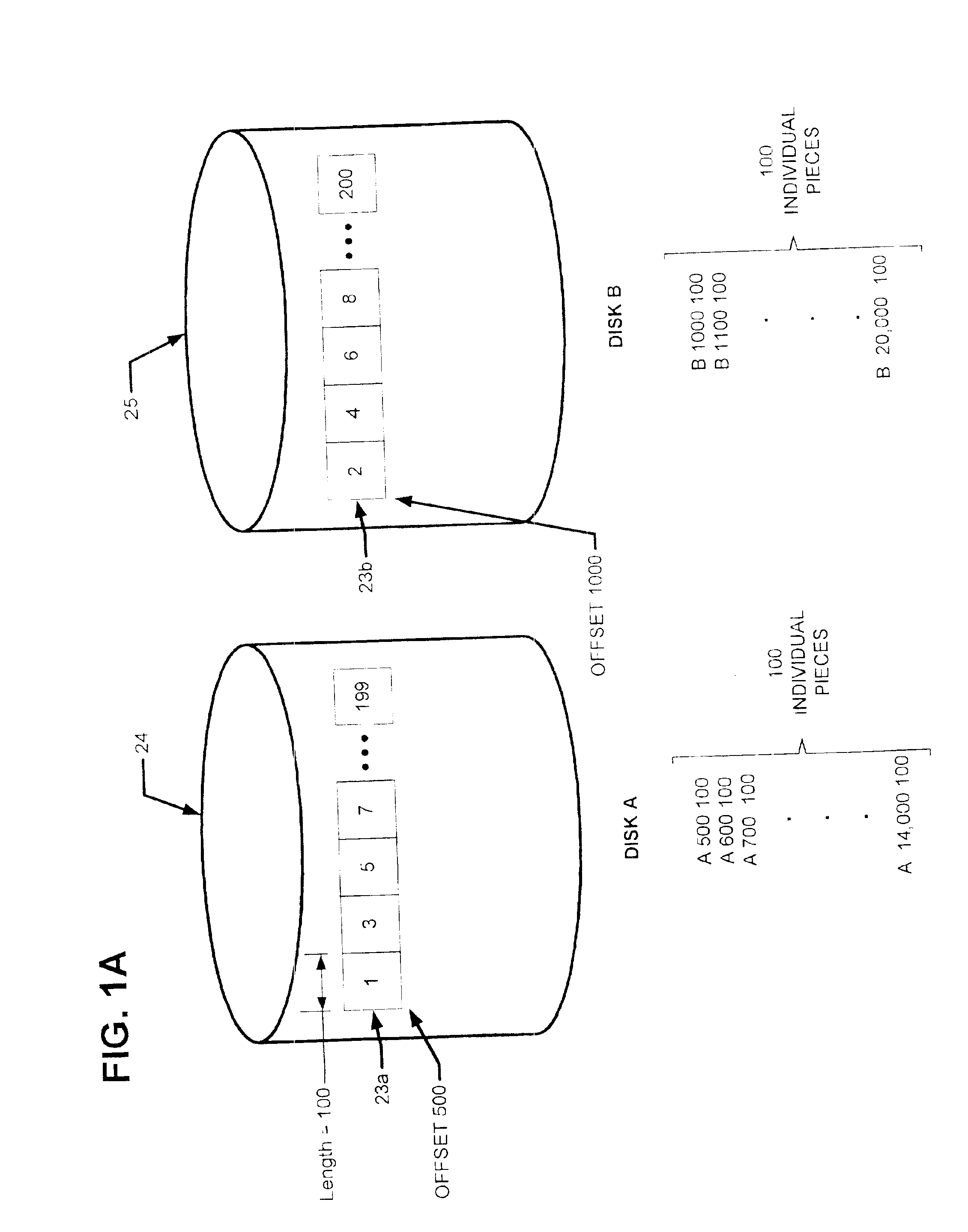Method and apparatus for computing file storage elements for backup and restore
a file and storage element technology, applied in the field of backup storage systems, can solve the problems of exceeding the number of extents that the backup and restore system can handle, the limited number of extents that the backup and restore system can receive, and the large number of backup and restore systems. achieve the effect of fewer resources and a quick restoration process
- Summary
- Abstract
- Description
- Claims
- Application Information
AI Technical Summary
Benefits of technology
Problems solved by technology
Method used
Image
Examples
Embodiment Construction
[0033]Before proceeding with a description of the present invention and the techniques associated therewith, some introductory concepts and terminology are explained.
[0034]An extent is a contiguous piece of data on a disk (i.e. a physical device) identified by a disk name, a starting offset and a length. These three parameters taken together uniquely identify an extent. As used herein, the term “extent” refers to the basic unit used to specify data.
[0035]As will be explained further below, in accordance with the present invention, multiple extents can sometimes be specified as though they are a single extent. The term “collapsed extent” is used herein to refer to any extent which itself is made up of more than one extent.
[0036]Reference is also sometimes made herein to storage systems (e.g. primary storage systems) having a disk array with a certain number of disks (e.g. two disks). It should be understood that any particular values mentioned herein are only exemplary and are not in...
PUM
 Login to View More
Login to View More Abstract
Description
Claims
Application Information
 Login to View More
Login to View More - R&D
- Intellectual Property
- Life Sciences
- Materials
- Tech Scout
- Unparalleled Data Quality
- Higher Quality Content
- 60% Fewer Hallucinations
Browse by: Latest US Patents, China's latest patents, Technical Efficacy Thesaurus, Application Domain, Technology Topic, Popular Technical Reports.
© 2025 PatSnap. All rights reserved.Legal|Privacy policy|Modern Slavery Act Transparency Statement|Sitemap|About US| Contact US: help@patsnap.com



